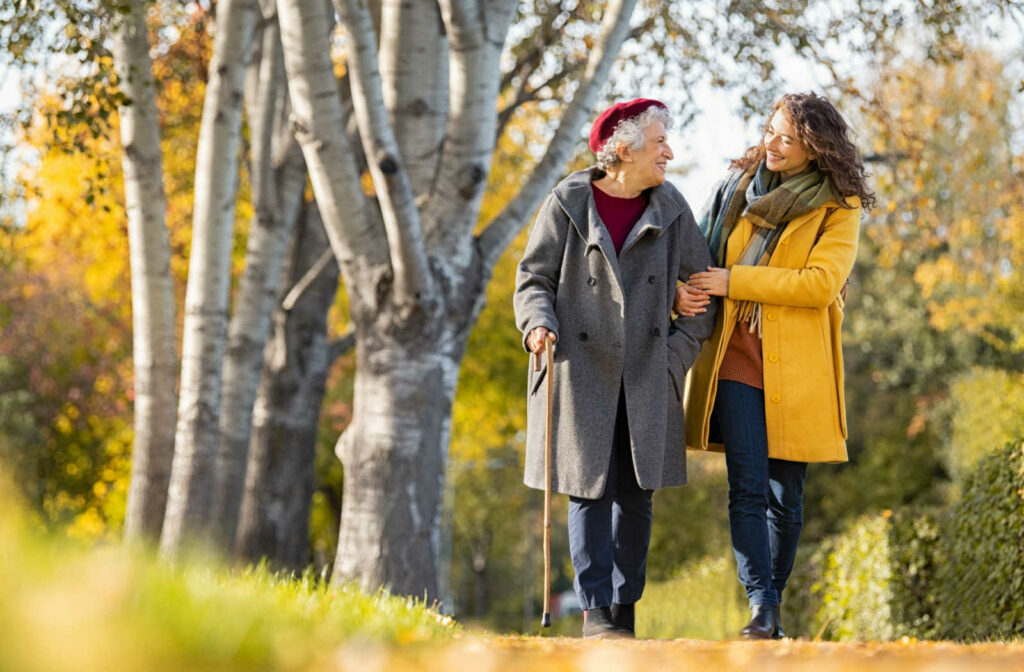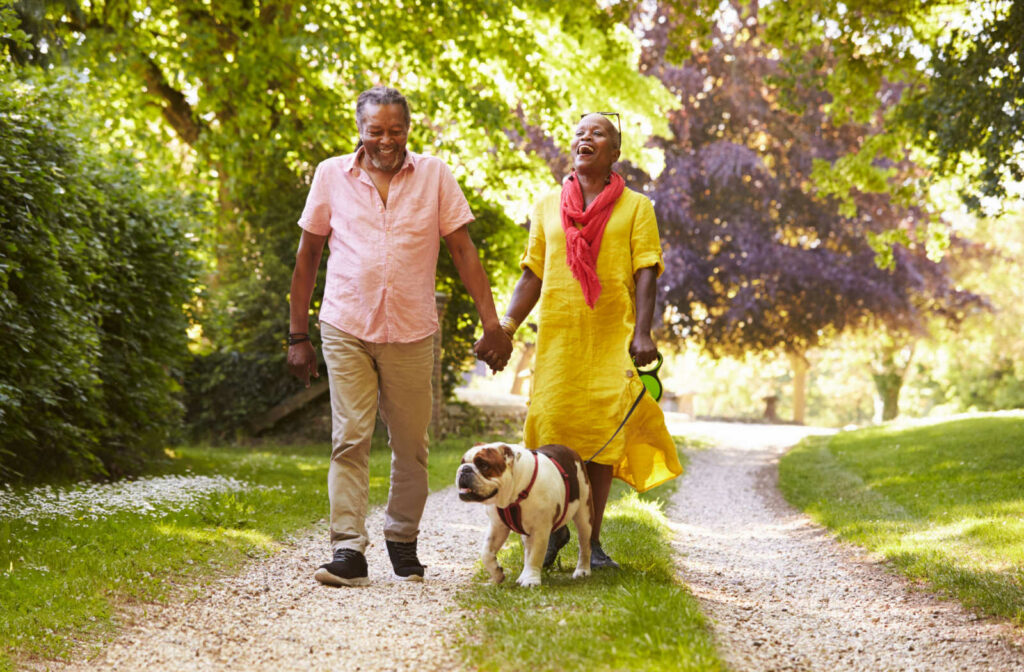As a person ages, they don’t suddenly need no exercise. The opposite is true; their activity needs simply change. Physical activity is still an essential part of maintaining a good quality of life. A senior doesn’t need (and often can’t handle) the same type of activity they could when they were younger. So, creative solutions are sometimes required, depending on the situation
Because it is low impact and offers several different physical and mental health benefits, walking is often a highly recommended senior activity. Part of choosing an independent living community to be a part of is ensuring that the community offers services that align with your desire to stay physically active as you age.
Benefits of Walking for Seniors
There are many physical and mental health benefits to going for a walk for anyone, regardless of age. But let’s look at some specific ways that walking improves a senior’s life.
Stabilizes Blood Sugar Levels
As we age, we become more susceptible to blood sugar fluctuations, especially if care hasn’t been taken earlier in life regarding sugar intake. However, going for a walk that gets your heart pumping harder causes your muscles to work and use more glucose. In turn, this causes your blood sugar to stabilize normally.
Improved Heart Function
Exercise alone isn’t a surefire way to prevent heart disease or complications. However, it’s a major contributor to better overall heart health. According to the heart foundation, going for daily walks will decrease your chances of heart issues like disease or stroke by 35%.
Pain Relief
It’s not a secret that aging typically comes with extra aches and joint pains that you didn’t think were possible. But a light activity like walking keeps your joints limber. It also helps minimize inflammation—which is a significant cause of joint pain. This, coupled with a healthy diet, can help reduce unnecessary pain.
Free
You could get a gym membership, or many communities have spas and exercise rooms available for residents to use for no additional charge. But if this isn’t the case, walking provides an easy way for seniors to stay active for no extra cost.
Improved Mental Health
All benefits discussed above address physical health in a senior. However, there are some great mental health benefits to regular walks. Going for walks can have a noticeable effect on someone’s depression or anxiety, especially if they can take a walk in a green space or forest.
Additionally, for many seniors, walking is a great social activity. Not only will it be a time of improving physical health, but mental health will improve as aging adults can foster relationships with each other. This is especially beneficial if someone is already struggling with feeling lonely and isolated.

How Much Should a Senior be Walking?
There’s no one-size-fits-all answer for how much a senior should be exercising. According to the CDC, individuals over 65 should get a minimum of 150 minutes of moderate-intensity exercise weekly. This includes things like a brisk, 30-minute walk 5 days a week.
Additionally, a senior can do 75 minutes of heavier-intensity exercises, such as jogging, running, or hiking. However, this may not be possible in some cases.
Talk to Your Doctor
Before committing to an exercise or walking schedule, discussing it with your doctor is a good idea. They will offer advice on how much you should push yourself weekly.
By looking at your particular health situation, the doctor can work with you and develop a plan that maximizes the health benefits and minimizes the risk of injury.
Signs You May be Walking too Much
Even though it’s healthy, walking or exercising too much is still possible. Once this happens, the benefit versus risk is not balanced anymore, and there is a risk of a preventable injury.
Here are a few signs a senior may be getting too much exercise:
- Pain—in many cases, some discomfort is normal, but it should be minor and temporary.
- Chest pain or trouble breathing
- Dizziness
- Sores such as blisters that won’t heal
Suppose you begin experiencing any of these things while exercising. In that case, you should stop the exercise and see a doctor before continuing.
How the Lodge at Truitt Homestead Encourages Healthy Living
Choosing an assisted or independent living community is a decision that shouldn’t be taken lightly. You must find a place to call home that contributes to your mental, physical, and spiritual health.
The Lodge at Truitt Homestead is committed to providing a community that caters to its resident’s needs. The health and wellness of the community’s members are our primary focus. If you’re considering calling The Lodge home, give us a call. Our helpful staff is happy to answer all your questions and book you a tour, so you can see everything the community offers with your own eyes.





